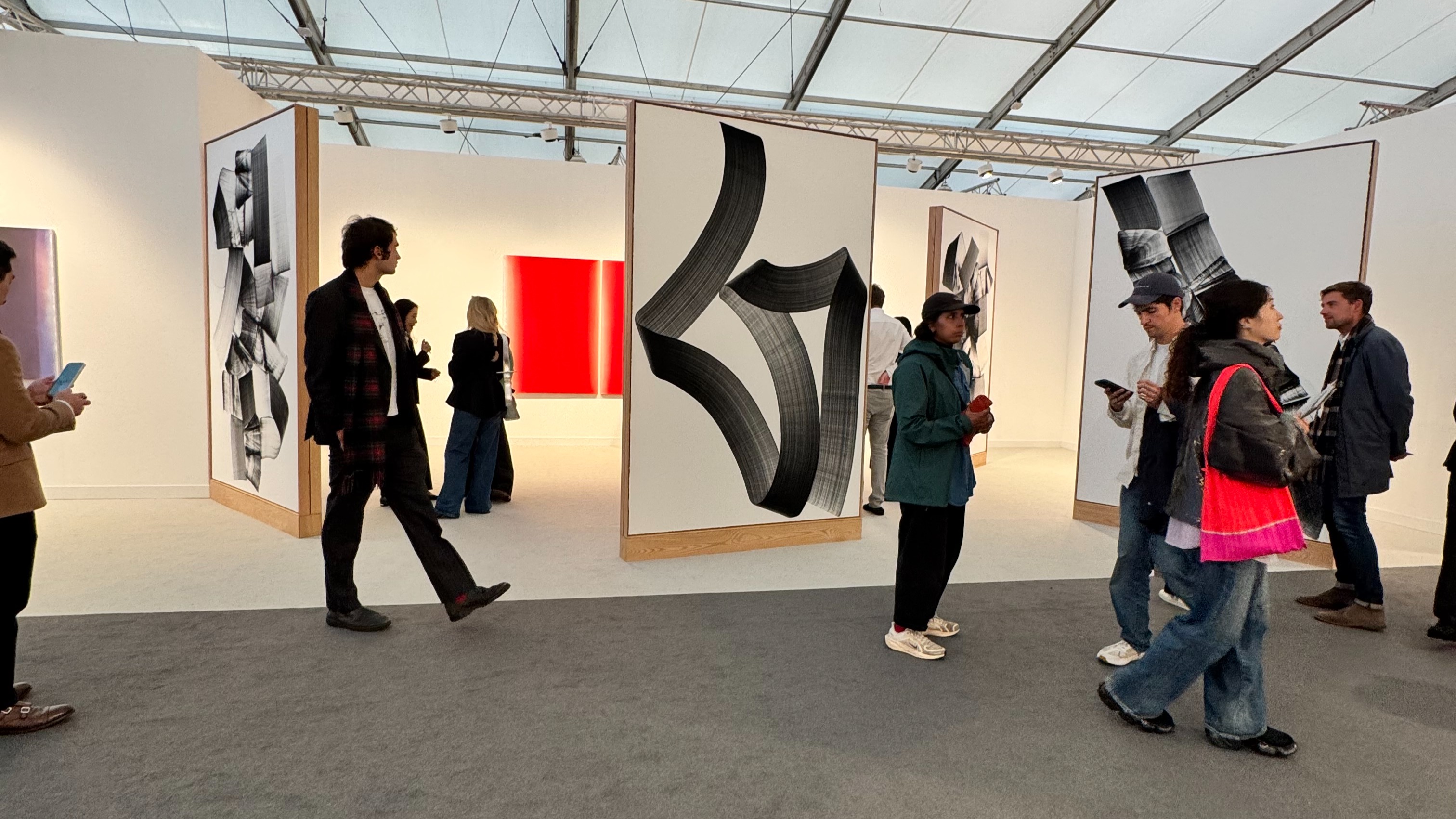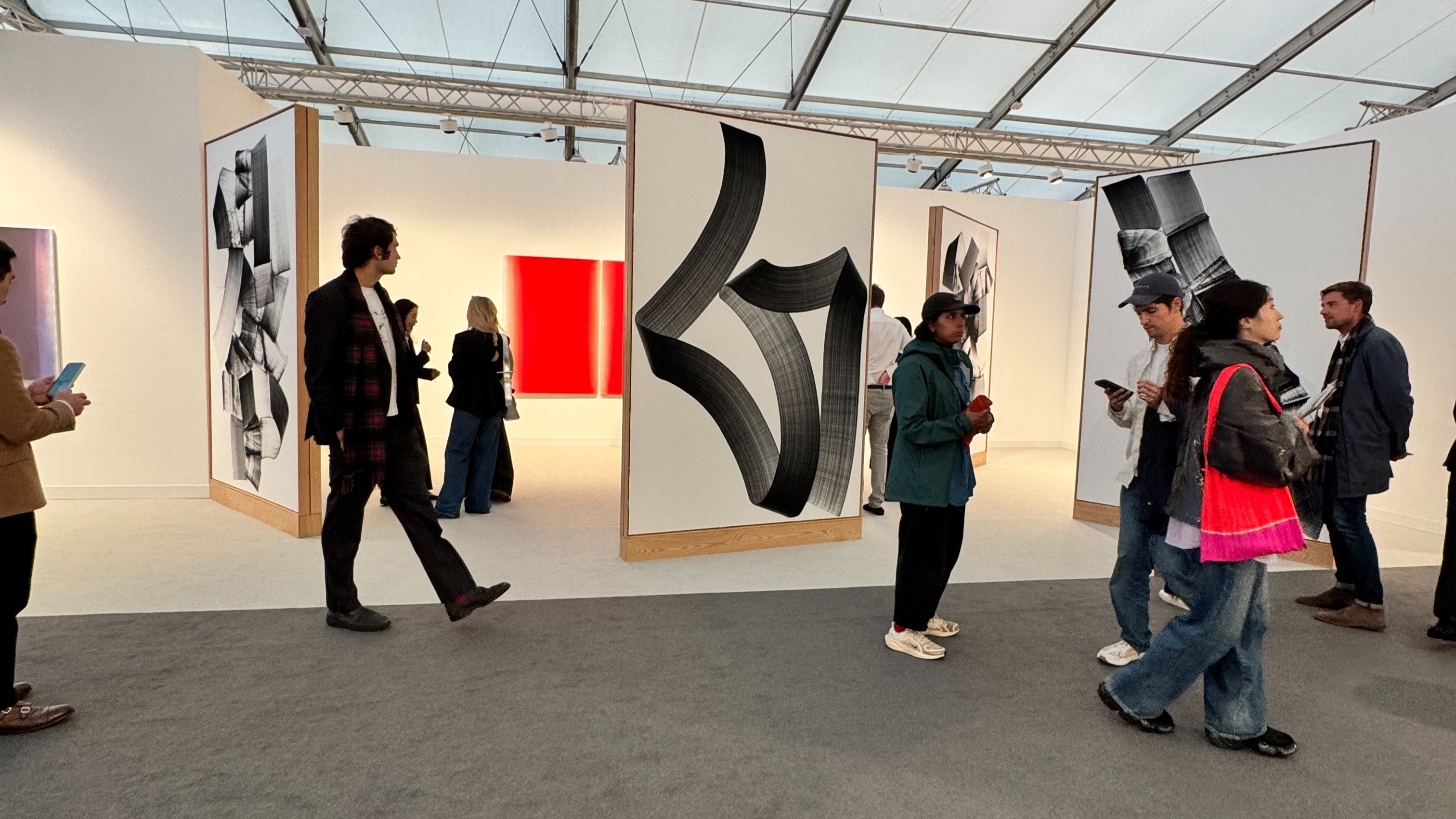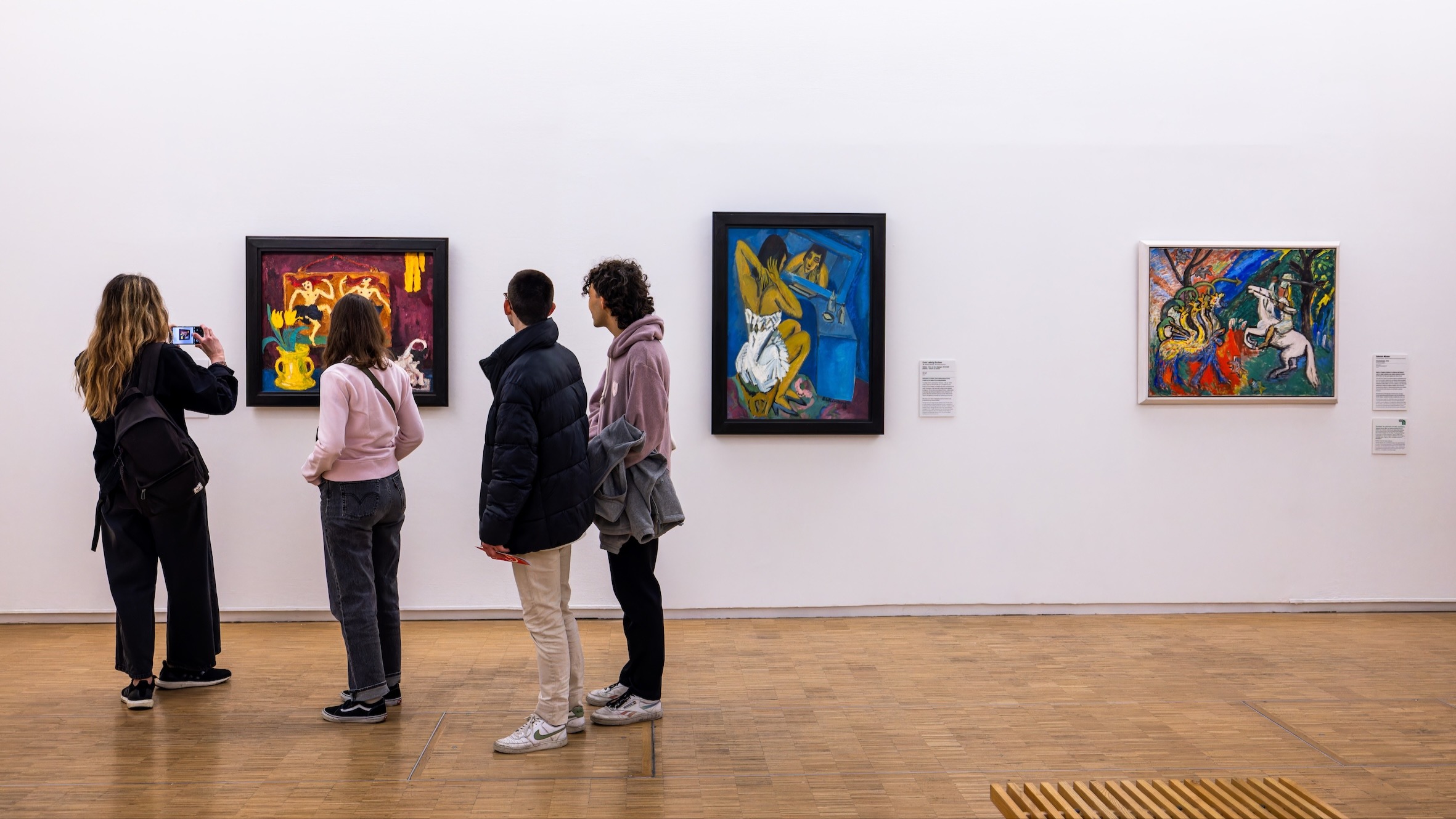
Foreigners Everywhere: Highlights From The Venice Biennale
Year after year, the art calendar becomes increasingly dense and internationally widespread; however, there is an appointment to which the art community jointly attributes the highest position on the podium: the Venice Art Biennale, which, since 1895, takes place every two years in Venice.
The Venice Biennale is acknowledged as one of the most prestigious cultural institutions worldwide and oversees the activity of 87 national pavilions, spread mainly in the Giardini and Arsenale areas, plus a small number throughout the city.
The 60th International Art Exhibition, 'Stranieri Ovunque – Foreigners Everywhere', curated by Adriano Pedrosa, is open to the public from Saturday, April 20th to Sunday, November 24th, 2024. The title of the 60th Exhibition is drawn from a series of works started in 2004 by collective Claire Fontaine: neon sculptures in different colours that render in a growing number of languages the words, 'Foreigners Everywhere', which are actually exhibited in the Corderia dell’Arsenale. As explained by Adriano Pedrosa: 'The backdrop for the work is a world rife with multifarious crises concerning the movement and existence of people across countries, nations, territories and borders, which reflect the perils and pitfalls of language, translation, nationality, expressing differences and disparities conditioned by identity, nationality, race, gender, sexuality, freedom, and wealth. In this panorama, the expression, "Foreigners Everywhere", has several meanings. First of all, that wherever you go and wherever you are you will always encounter foreigners—they/we are everywhere. Secondly, that no matter where you find yourself, you are always truly, and deep down inside, a foreigner'.
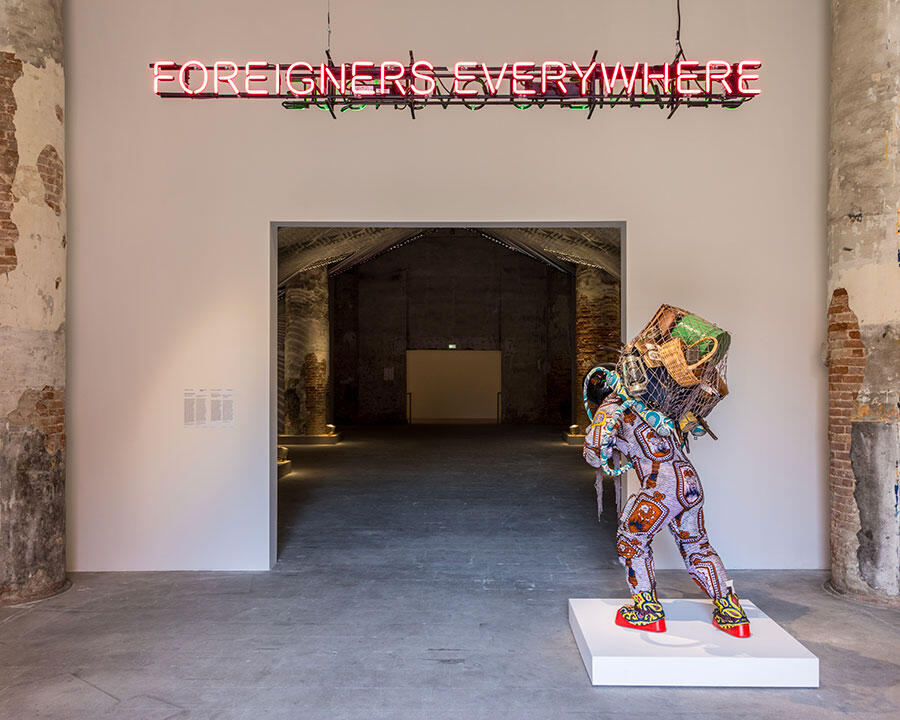
Claire Fontaine, Foreigners Everywhere (Stranieri Ovunque), 2004-24 Courtesy: La Biennale di Venezia; credits: Marco Zorzanello
The 2024 Biennale Exhibition presents 331 artists and collectives who have lived or currently live in and among 80 countries, including Hong Kong, Palestine and Puerto Rico, reflecting how artists have always travelled and moved for a wide variety of reasons. The main focus of the Biennale Arte 2024 is therefore on 'those artists who are foreigners, immigrants, expatriates, diasporans, exiles or refugees, particularly those who move between the Global South and Global North'.
This is clearly displayed in the central exhibition curated by Adriano Pedrosa (partly held at the Giardini main Pavilion and partly at the Arsenale), who mainly selected artists from underrepresented countries, migrants or with a colonial background. Many of them have been presented for the first time at the Venice Biennale, including artists who are no longer living, such as Bertina Lopes, originally from Mozambique, or Philomé Obin and his brother Seneque Obin, from Haiti, as well as living artists, such as Pablo Delano, from Puerto Rico, or Joseca Mokahesi, born in the Brazilian Amazon and belonging to the Yanomami indigenous population.
In the view of the curator, and connecting to the etymology of the word, the interpretation of 'foreigner' is not merely related to geographical provenance: 'The Italian "straniero", the Portuguese "estrangeiro", the French "étranger" and the Spanish "extranjero", are all etymologically connected to the "strano", the "estranho", the "étrange", the "extraño", respectively, which is precisely "the stranger". The first meaning of the word “queer” is precisely “strange”, and thus the Exhibition unfolds and focuses on the production of other related subjects: the queer artist, who has moved within different sexualities and genders'. This is very well represented through the work of young, hence already internationally acclaimed artists, such as the New York based Louis Fratino, whose works 'explore the ways in which LGBTQ+ people are socialised to navigate the world as an “outsider”, in dialogue with works by internationally recognised artists of the past such as Filippo de Pisis'.
Louis Fratino, Metropolitan, 2019
Focusing on national participation, diverse interpretations of what being 'foreigners' recur as a fil rouge, although adopting different perspectives.
In some cases, this focuses specifically on the history of the represented country, proposing an artistic representation of 'being foreigners' in a native country, such as in the case of the Golden Lion winner Australia or of the Danish participation. More specifically, for the Australian Pavilion, artist Archie Moore reproduces his family tree tracing his Aboriginal Kamilaroi and Bigambul relations dating back 65,000+ years, while, in the Danish Pavilion, photographer Inuuteq Storch shares visual explorations of his homeland, Greenland, and its colonial history.
In other cases, the projects focus specifically on de-colonisation issues, with references to museum representation, such as in the case of Spain, thanks to Sandra Gamarra Heshiki’s extensive research manifested in new works based on paintings that belong to the national heritage of Spanish art collections from colonial times to the Enlightenment which investigate the absence of decolonial narratives within museums; or in the case of the British Pavilion, where John Akomfrah investigated themes of post-colonialism, ecology and the politics of aesthetics with a renewed focus on the act of listening and the sonic.
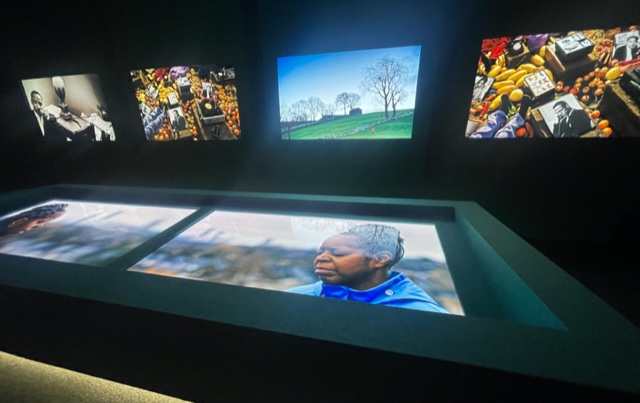
British Pavilion
Besides the British pavilion, the investigation on sound has been masterfully investigated also in the Italian Pavilion, curated by Luca Cerizza and displaying the work of Massimo Bartolini, which, through three spaces built around various acoustic experiences and meeting points, suggests the highly relational nature of sound and the importance of listening.
We would also like to highlight the reference to mythology and imaginary worlds, proposed by a few pavilions. France brought the visitor in an enchanted world, developed by Julien Creuzet to provide an immersion in a poetry of forms and sounds, volumes and lines in movement and colorful encounters forming new languages. Mythology is instead a primary theme for the Nordic Countries Pavilion, which proposes an audio-visual installation by artist Lap-See Lam realised in collaboration with experimental composer Tze Yeung Ho and textile artist Kholod Hawash (Finland), featuring, at the centre of the story, the Cantonese mythological half man-half fish figure Lo Ting.
In addition to sight and hearing, at the Venice Biennale we also found an investigation of olfaction, artistically expressed by the Korean participation: through a research involving more than 600 participants and the collaboration of professional noses, artist Koo Jeong reproduces, through a wooden sculpture, the Korean smell in the Pavilion.
Korean Pavilion
Although sometimes the exhibited projects might have appeared too didascalic or lacking innovation, in general, we appreciate the in-depth investigation carried out by many of the participating countries, as well as by the main pavilions, and the high quality of the artistic restitution. We believe that the Biennale turned on a beacon on one of the most discussed cultural themes, such as that of decolonisation and underrepresented populations, giving emphasis to a debate which is not possible to ignore anymore.


